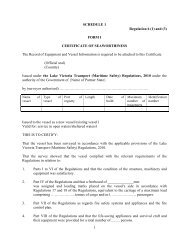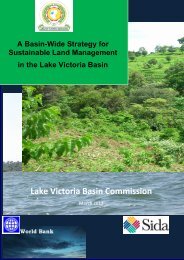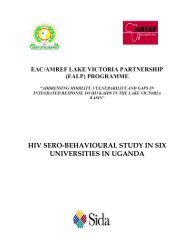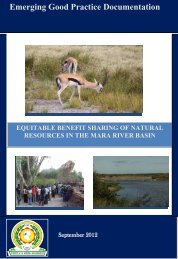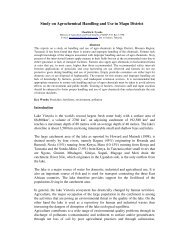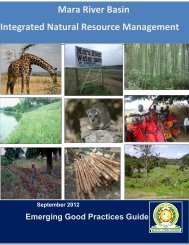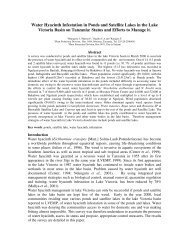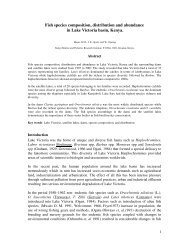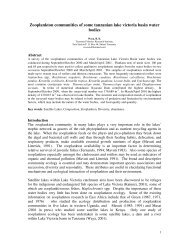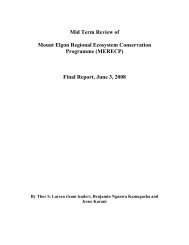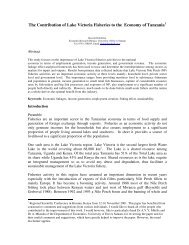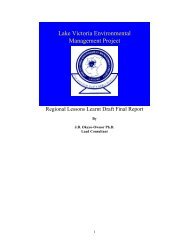Total Economic Value of Maasai Mau, Trans Mara and Eastern Mau ...
Total Economic Value of Maasai Mau, Trans Mara and Eastern Mau ...
Total Economic Value of Maasai Mau, Trans Mara and Eastern Mau ...
Create successful ePaper yourself
Turn your PDF publications into a flip-book with our unique Google optimized e-Paper software.
Innovative conservation incentives will turn forests into an even greater asset byencouraging sustainable l<strong>and</strong> use <strong>and</strong> improvement <strong>of</strong> ecosystems that serve waterflows. The concept involves identifying conservation areas, bringing on board variousstakeholders, trial runs <strong>of</strong> various market based incentives, selection <strong>of</strong> independentimplementing agencies, <strong>and</strong> adoption <strong>of</strong> conservation schemes that compensatel<strong>and</strong>owners affected by expected developments. It involves a collaborative network <strong>of</strong>organizations <strong>and</strong> agencies that are actively involved in the development <strong>of</strong> marketbasedstrategies <strong>and</strong> tools aimed at the conservation <strong>and</strong> restoration <strong>of</strong> ecosystems likeforests, water basins, wetl<strong>and</strong>s, <strong>and</strong> others services. The development <strong>of</strong> such modelswill involve stakeholder pr<strong>of</strong>iling, consultative processes, information exchange,favourable policy <strong>and</strong> legal regimes, guidelines for market operation, <strong>and</strong> development<strong>of</strong> market-based approaches. Like easement <strong>and</strong> zonation, use <strong>of</strong> independentinstitutions to facilitate the payment <strong>of</strong> incentives to conservation agents <strong>and</strong> thecollection <strong>of</strong> revenues from beneficiaries is integral part <strong>of</strong> the framework.7.2.1 Payment <strong>of</strong> Environmental servicesThe major drivers <strong>of</strong> forest degradation <strong>and</strong> subsequent loss <strong>of</strong> ecosystems service stock<strong>and</strong> flows are mainly the local people. Those that enjoy the benefits <strong>of</strong> better-managedwatershed services should give incentives to communities adjacent to the forests toparticipate in management <strong>of</strong> forest resources. In short, the upstream stakeholdersbecome sellers <strong>of</strong> environmental services while the downstream users become buyers.Such links <strong>and</strong> payments are commonly referred to as the payment for environmentalservices (PES). A recent study in the <strong>Mara</strong> River Basin that evaluated the watercondition, PES contexts, <strong>and</strong> the process <strong>of</strong> developing PES <strong>and</strong> roles <strong>and</strong>responsibilities <strong>of</strong> key stakeholders (Bhat, et al, 2006) provide some useful informationfor further discussion.The report showed that the legal framework in Kenya is robust enough to accommodatePES under the Water Act 2000, the Environmental Management Act (EMCA, 1999) <strong>and</strong>the Physical Planning Act 1996 among others. The institutional framework for PESschemes are fairly well developed in Kenya <strong>and</strong> Tanzania with various players createdunder the above legal set ups being present within the <strong>Mara</strong> River Basin. These include66



